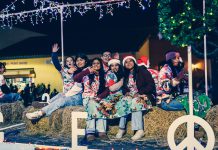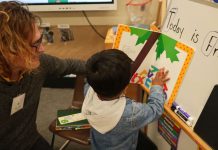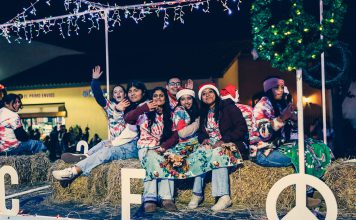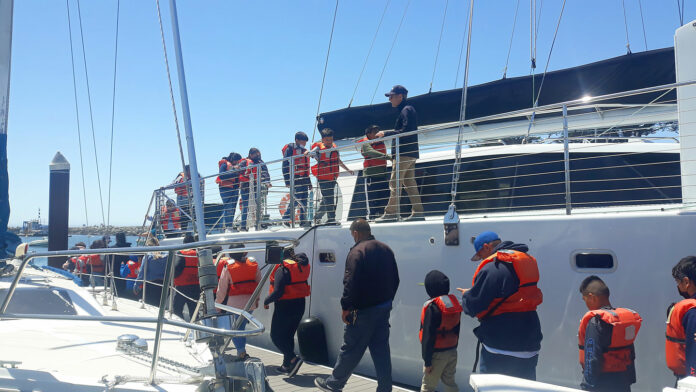
KING CITY — After two years without a field trip due to the pandemic, fourth graders from Santa Lucia Elementary School in King City were able to board the O’Neill Sea Odyssey catamaran for a two-hour tour on the Pacific Ocean.
Last month, students from teacher Kevin Roberts’ fourth-grade class traveled by bus to Santa Cruz to learn about marine life, navigation and water pollution. The May 4 field trip was free, including the cost of the bus transportation, thanks to donors to the O’Neill Sea Odyssey organization.
“Thank you to everyone involved with the O’Neill Sea Odyssey program, especially the founder of the program, Jack O’Neill,” Roberts said.
All the students wore life jackets and were accompanied by seven parents and one teacher. There were four members of the Sea Odyssey crew that day: instructors Bre Hunt, Moshe Vilozny and Emily Casaretto; and Capt. Mike Egan, who steered the brand-new catamaran during the mini adventure.
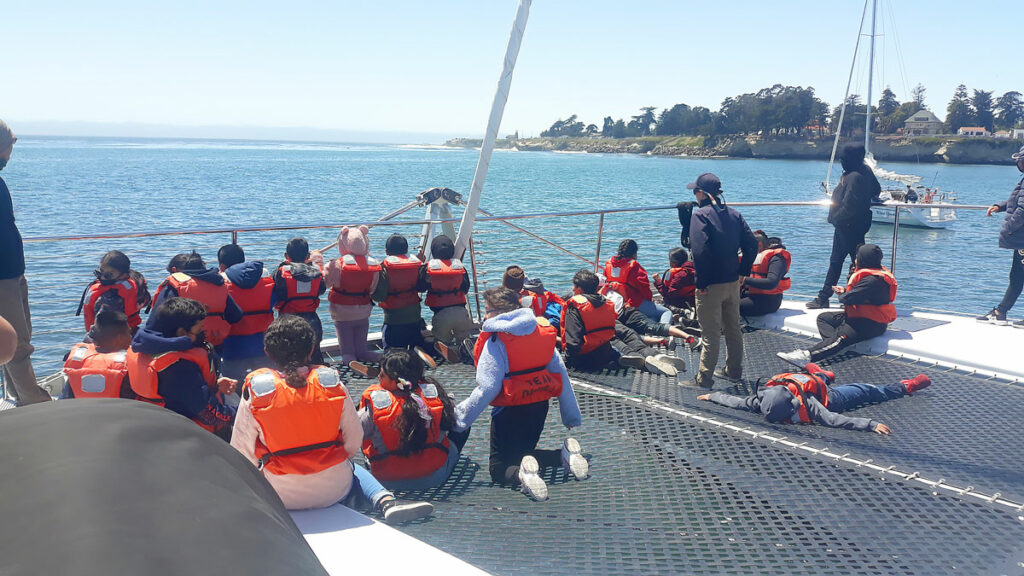
While aboard the boat, students learned about marine life, navigation and various kinds of plankton. They were also able to use handheld compasses, and everyone had their photos taken holding onto the steering wheel.
“For many students, this was their first time on a boat,” Roberts said. “All of the crew were friendly and gave all of us an incredible experience that we will never forget.”
After the boat returned, students went inside the O’Neill classrooms to continue their lessons.
“Inside the classroom, we put on orange life jackets, and then while sitting on the catamaran’s net we were bouncing up and down,” said fourth-grader D’Angelo.
Alyssa added, “When I was sitting on the net, the net was strong,” and classmate Diego said, “We were able to touch the fur of sea otters while sitting on the catamaran net.”
Other students commented: “We learned about how sea otters died and how the otters protect the kelp, and the causes of water pollution,” said Edwin, while Sofia explained, “Inside the classroom, we got to spray the city model with water and see where the water that travels into the city’s storm drain goes.”
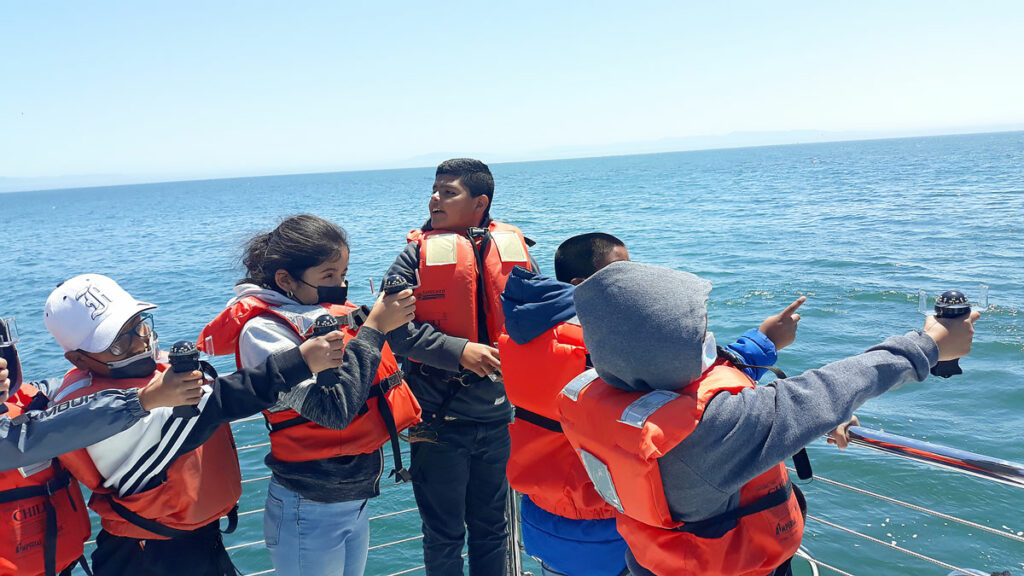
Fourth-grader Nailea further explained, “We put sprinkles on the city model to represent the trash, and the water we sprayed was the oil that went into the dirt that went down the storm drains.”
“Water bottles, gasoline, plastic bags that never dissolve go into the ocean by the storm drains,” Edwin added. “The rain sends the pollution into the ocean where the animals choke and die.”
Part of the requirement of last month’s trip was for students to reach out to the public and tell them about how to protect the ocean and the sea life that depends on the ocean for survival.
“I love animals. It was fun to see sea lions and sea otters,” student Kimberly said. “In order to save the ocean, we need to not use plastic water bottles.”
Jesus added, “I saw sea lions, dolphins, sea otters, a baby sea otter, ducks, pelicans, crabs and plankton,” while Daisy said, “I got to pull the jar with the plankton out of the ocean while on the boat.”
Back inside the classroom, students were able to see three drops of ocean water under a high-powered microscope.
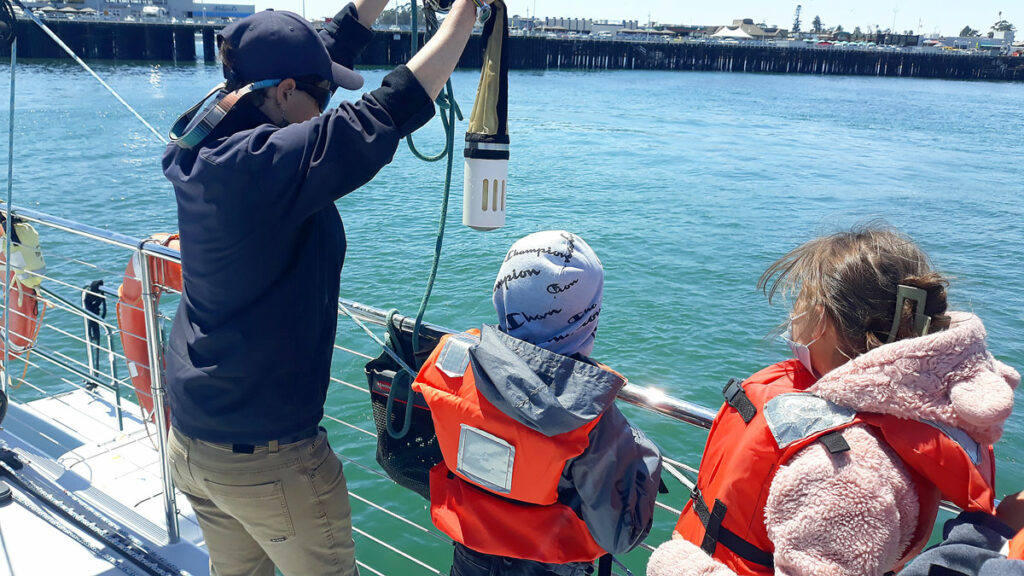
“We saw zooplankton and phytoplankton up close on a big screen,” said fourth-grader Juan Pablo, adding that plankton is crucial to other wildlife’s survival in the ocean.
Before the class met the instructors, students ate lunch near the sand, played volleyball and then walked down to the beach, where they were able to look at the beauty of the ocean. Some drew on the wet sand, while others looked for sea shells and gently touched the ocean for the first time with their fingers as the tide crept ashore.
“Daisy and I drew on the wet sand,” student Juquila said. “I made a face. It had two lines for eyes and a smile was added. Daisy wrote ‘Hi!’ on the sand.”
Classmate Rafael added, “The teacher took us to the beach and took a picture of the whole class.” The ocean wanted its picture too and quickly crept up behind the students, who then quickly ran away.
“It was a fun day!” Jocelyn said.
Kevin Roberts contributed to this article.


